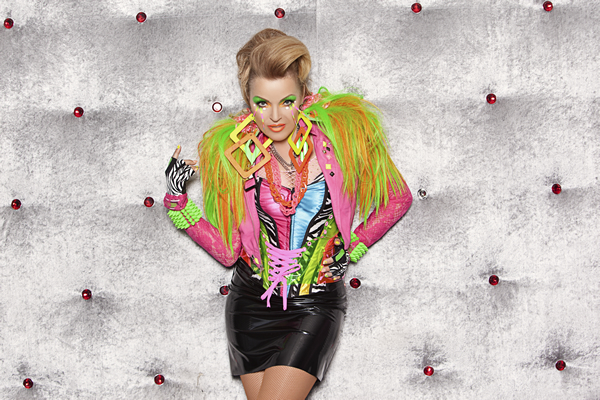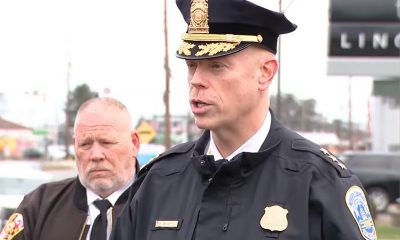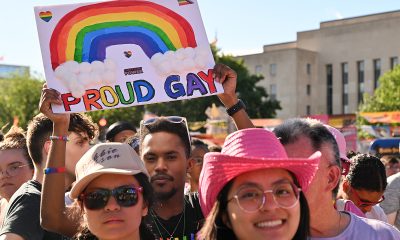a&e features
Kristine W.’s triumphant return
Dance diva readies new album, Distrkt C appearance
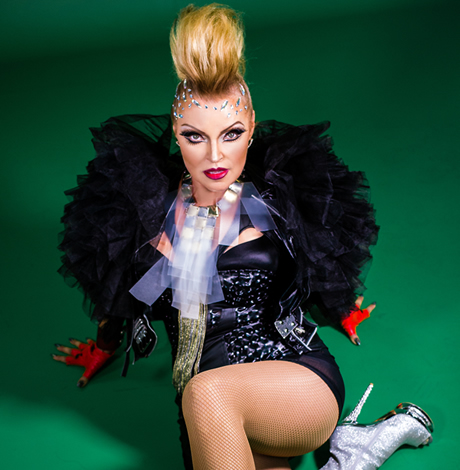
Distrkt C Pride
An indoor/outdoor music festival and concert
Saturday, June 10
10 p.m.
Official men’s party of Capital Pride
DJs Jared Conner and Joe Gauthreaux
Grind
Inaya Day
Sunday, June 11
5 p.m.
Outside: disco and classics with Billy Carroll
Concert starts at 8:30 p.m.
Crystal Waters
Kristine W
Kim English
Inside: T dance at 6 p.m. with Roland Belmares
10 p.m.
X Gonzalez
Twisted Dee
Morabito
Amuka
D.C. Eagle
3701 Benning Rd., N.E.
distrktc.com
Many artists who are lucky to chart hits on the Billboard charts at all often see the law of diminishing returns kick in gradually over time, even with consistently good material.
Somehow, though, Kristine W. has managed to maintain a staggeringly impressive record on the U.S. Dance charts. She’s had 14 no. 1 singles over a nearly 20-year period. Of the 19 singles she’s charted there, the lowest she ever peaked at was no. 4. She had another smash last summer with “Out There,” which made it to No. 3.
She’s in D.C. this weekend to headline at the Distrkt C Pride Indoor/Outdoor Festival & Concert. She spoke by phone with the Blade, her first interview with us since 2012, last week, from her home in Las Vegas. Her comments have been slightly edited for length.
WASHINGTON BLADE: How’ve you been?
KRISTINE W.: It’s been a challenging year. It just seems like a lot of people around me are going through some transition. It’s a time of change. It could be life, jobs or relationships. Last year I wrote the song “Out There” which is really strange because now I’m going through a divorce. It’s really strange how I keep writing this music and it ends up being real life. “Land of the Living” was one of those albums. It was like I wrote it then I had to live it.
BLADE: Are the songs more universal than you originally realized or do you have a sixth sense?
KRISTINE W.: I think they’re more universal than I really thought, although my grandfather had this gift of kind of seeing into the future and so did his mother, my grandmother, Elizabeth who I’m named after. I don’t know if I didn’t get some of that too. Sometimes I get certain signs in dreams or I’ll get this really weird epiphany. I fight it all the time but sometimes it just kind of overtakes me.
BLADE: What was your favorite remix of “Out There,” your latest hit?
KRISTINE W: I think the Moto Blanco mix. But I also like the original mix that’s going to be on the album because it takes you on a journey. That album mix as far as watching a crowd having a good time but … at a Pride event, the Moto Blanco mix is so uplifting, you can just see everybody get lifted up from it. It’s a very happy production.
BLADE: Do you collaborate on the remixes at all?
KRISTINE W.: Oh yeah. So many of them have known me enough years that we kind of know each other’s audiences, we play a lot of big events, we know what kind of works, we have personal relationships and it’s very cool. … I try to use the remixes to cover as big of a territory as possible. The Loop Soop version is like a tropical, Miami kind of vibe so that’s kind of like sipping cocktails and chilling at your house. If you pick ‘em right, they can afford you a chance of reaching a wider audience than if you just put out a couple versions.
BLADE: Tell us about your upcoming single “Stars.”
KRISTINE W.: “Stars” is really special. It’s a song I wrote a couple yars ago and kind of sat on but in a strange way, it’s kind of mirroring my life right now and what I’m going through. But not just for me, it’s universal. … Everybody who listens to it it’s like there’s a piece of them in it. You can just see it in their reaction. … We’re working on some really cool remixes of it right now.
BLADE: When will it be out?
KRISTINE W.: We’re shooing for Independence Day but it’s a little crazy right now. We have to get it in the queue. It’s gonna come down to how soon I can get pushed through the line.
BLADE: You were talking about a new album last summer when “Out There” came out. What’s the status on that?
KRISTINE W.: The album is finished. We’re probably going to put out a couple singles, then drop the album or maybe put it on pre-order. We’re looking into that right now. But it’s gonna be amazing.
BLADE: What’s it like? When did you make it and how long did it take?
KRISTINE W.: We started about six months after “New & Number Ones” so like mid-2012 we were working on it. We’ve written a lot of songs. I’m thinking it’s actually going to be like two back-to-back albums and not wait as long to put another one out because we have like 15 or 16 tracks total. Then we’re recording naked versions, you know, stripped-down versions of the songs because people really enjoy those. I’ve worked with a lot of songwriters from all over the place. I just finished a song with Chris Cox and Lee Jagger called “Found a Home.” “Next to You” is being produced right now. I think it’s gonna be a little bit different the way we release this next batch of music.
BLADE: Are you of the opinion that the song has to work acoustically first or not necessarily?
KRISTINE W.: Well obviously like with the Chainsmokers, a lot of their songs are just a big, fat hook and then maybe a lyrical a hook. Maybe half a verse or something. They’re not making very complicated songs. They were just on “Saturday Night Live” and were with a band … and I noticed they’d added more structure. For me, it’s better to just write a song. Then if you want to do a stripped-down version, you can. I’m a songwriter, I’m a fan of songs, but I respect the fact that a lot of people have ADD.
BLADE: You were recently named the No. 8 dance artist of all time by Billboard. How did you feel?
KRISTINE W.: I thought somebody had made a mistake at first. It was so overwhelming. I just sat in my kitchen and cried. It was weird but very cool.
BLADE: Is it easier to chart a dance cut if it was a pop hit first or not necessarily?
KRISTINE W.: Everybody’s going to the dance chart now because the pop charts are so expensive to try to compete in. … To get airplay now is just so expensive. It’s like seven grand a week to get into rotation so the labels are all going to the dance club. So that geets really tough too because you have these independent artists like myself trying to compete with the Chainsmokers on the dance chart and every other pop person who’s crossed over, so it’s really crazy right now, really difficult. That’s why so many people you used to see having records, they’re not putting them out anymore because it’s so hard to get a No. 1 or even a top 5 hit now, it’s crazy.
BLADE: How have you managed to keep it going for so many years?
KRISTINE W.: I just try to keep writing good songs and try to work with the best people possible that I can afford (laughs). Just keeping my eye on the songs, focusing on the messages and hoping they connect with people. And also what I said before about the different styles. You might be able to get on a different Spotify list with a Frank Lords Miami tropical mix then you can doing a Hans Milan EDM mix. Now that everything is streaming, Spotify, Pandora, blah blah blah, that’s gonna be the future, so getting on those playlists is no small feat. So you might get on two playlists with two different mixes but the labels are freaking out because they don’t want to spend the money on a bunch of remixes either necessarily. If you’re not friends with these people, like a remix by Ralphi Rosario or whatever is like 10 grand, you know. It’s very expensive. So the labels are stepping back going, “Oh shit.” Ralphi doesn’t kow any of those guys. They’re just suits to him so he can demand whatever. On the flip side, there are a lot of great young remixers who are the future. I know a lot of them and have given a lot of them their shots, like the Perry Twins for example. They did “Be Alright” for me and then they blew up. I don’t want to call myself a major artist, but they needed a big artist to give them a shot. … I tell them if it’s crap, I won’t put it out but if it’s great, I’ll promote the crap out of you in press and everything and tell everyone to hire them. So then you can go back later and say, “Hey guys, you mind doing me something solid,” and they’re like, “Yeah sister.” It’s like a really crazy family.
BLADE: How are your two kids? What’s it like being a mom to two teens?
KRISTINE W.: They’re super cool. I’ve got two great kids. Everybody goes, “Oh, you just got lucky,” but I don’t think it’s luck. I think it’s just trying to be there, you’re annoying as heck. A very wise lady, my mother-in-law who passed away in 2013, she said you better be there because if you’re not, somebody else will be and you won’t be happy with the outcome. I never forgot that.
BLADE: Have your gay fans reached out to you at all since your divorce?
KRISTINE W.: I haven’t really talked about it much. It’s tough enough going through it, I don’t dwell on it. I have to get up there and make the world a happier place one song at a time so I haven’t talked about it too much.
BLADE: Of course a song is gonna sound great on the huge speakers in a big state-of-the-art dance club but people listen on their phones, with these crap ear buds and so on. How do you make something that’s gonna work across the board? Are you conscious of compression without losing fidelity when you record?
KRISTINE W.: It’s a huge issue and you really have to be conscious of that in mastering so the track doesn’t sound too digital. If everything sounds too teh-teh-teh (makes a thin-sounding percussion effect), you can only stand to listen to it for so long. You just want to turn it off, it’s too much for the ear. All the classic artists, that was all cut on 2-inch tape so it’s all analog which is very warm sounding to the human ear. You could listen all day and love it. But the way we’ve gone digital with everything so you have to really be conscious of that in mastering.
BLADE: What do you have planned for the Distrkt C event? You’re co-headlining with Crystal Waters and Kim English.
KRISTINE W.: Those girls are super cool. I don’t think I’ve ever met Kim English so that will be a thrill. Crystal and I are good buddies so I’m really excited to be spending time with her and getting to meet Kim English because I’ve heard her name for many years now. It’s gonna be great energy, the three of us. It will be fun and celebratory and just making it another great summer. We’re all here and kicking and in the land of the living. We’ll just get out there and make a joyful noise.
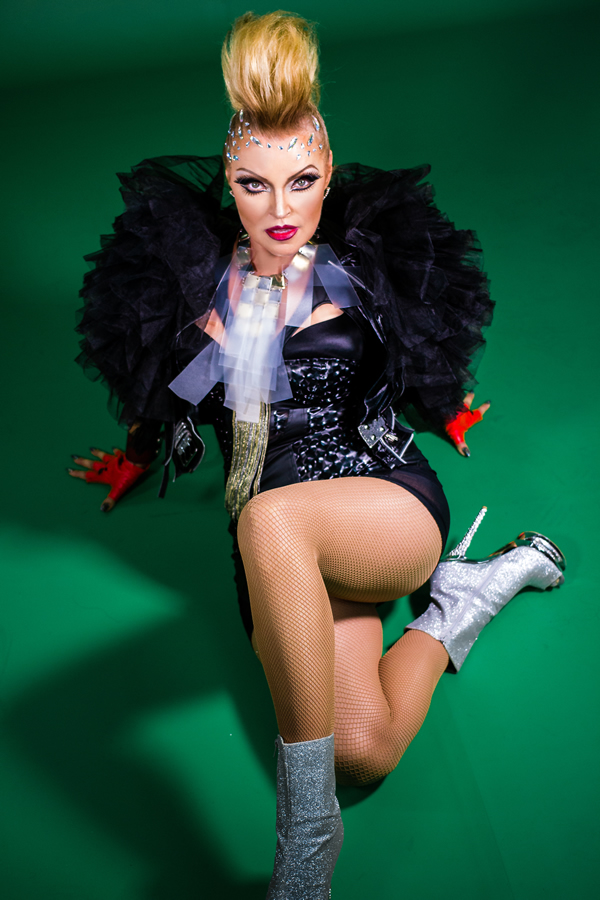
a&e features
Queer highlights of the 2026 Critics Choice Awards: Aunt Gladys, that ‘Heated Rivalry’ shoutout and more
Amy Madigan’s win in the supporting actress category puts her in serious contention to win the Oscar for ‘Weapons’

From Chelsea Handler shouting out Heated Rivalry in her opening monologue to Amy Madigan proving that horror performances can (and should) be taken seriously, the Critics Choice Awards provided plenty of iconic moments for queer movie fans to celebrate on the long road to Oscar night.
Handler kicked off the ceremony by recapping the biggest moments in pop culture last year, from Wicked: For Good to Sinners. She also made room to joke about the surprise hit TV sensation on everyone’s minds: “Shoutout to Heated Rivalry. Everyone loves it! Gay men love it, women love it, straight men who say they aren’t gay but work out at Equinox love it!”
The back-to-back wins for Jacob Elordi in Frankenstein and Amy Madigan in Weapons are notable, given the horror bias that awards voters typically have. Aunt Gladys instantly became a pop culture phenomenon within the LGBTQ+ community when Zach Cregger’s hit horror comedy released in August, but the thought that Madigan could be a serious awards contender for such a fun, out-there performance seemed improbable to most months ago. Now, considering the sheer amount of critics’ attention she’s received over the past month, there’s no denying she’s in the running for the Oscar.
“I really wasn’t expecting all of this because I thought people would like the movie, and I thought people would dig Gladys, but you love Gladys! I mean, it’s crazy,” Madigan said during her acceptance speech. “I get [sent] makeup tutorials and paintings. I even got one weird thing about how she’s a sex icon also, which I didn’t go too deep into that one.”
Over on the TV side, Rhea Seehorn won in the incredibly competitive best actress in a drama series category for her acclaimed performance as Carol in Pluribus, beating out the likes of Emmy winner Britt Lower for Severance, Carrie Coon for The White Lotus, and Bella Ramsey for The Last of Us. Pluribus, which was created by Breaking Bad’s showrunner Vince Gilligan, has been celebrated by audiences for its rich exploration of queer trauma and conversion therapy.
Jean Smart was Hack’s only win of the night, as Hannah Einbinder couldn’t repeat her Emmy victory in the supporting actress in a comedy series category against Janelle James, who nabbed a trophy for Abbott Elementary. Hacks lost the best comedy series award to The Studio, as it did at the Emmys in September. And in the limited series category, Erin Doherty repeated her Emmy success in supporting actress, joining in yet another Adolescence awards sweep.
As Oscar fans speculate on what these Critics Choice wins mean for future ceremonies, we have next week’s Golden Globes ceremony to look forward to on Jan. 11.
a&e features
Looking back at the 10 biggest A&E stories of 2025
‘Wicked,’ Lady Gaga’s new era, ‘Sexy’ Bailey and more

Although 2025 was a year marked by countless attacks on trans rights and political setbacks, the year also saw brilliant queer artists continuing to create art. From Cannes and Sundance Award winners now vying for Oscar consideration to pop icons entering new stages of their careers, queer people persevered to tell their stories through different media.
With the state of the world so uncertain, perhaps there’s no more vital time to celebrate our wins, as seen through some of this year’s top pop culture moments. While there’s no collection of 10 stories that fully encompass “the most important” news, here are some events that got the gays going:
10. ‘Mysterious Gaze of the Flamingo’ wins big at Cannes

The Cannes Film Festival has become a crucial start for films hoping to make their way to the Oscars, and first-time director Diego Céspedes won the top Un Certain Regard prize for his intimate western “The Mysterious Gaze of the Flamingo.” The film is set in the ‘80s and is intended as an allegory for the AIDS epidemic. Seeing a film that unpacks vital queer history win one of the most coveted awards at Cannes has been a huge point of pride in the independent filmmaking community.
Since the film bowed at Cannes, it has been selected as Chile’s Oscar entry in the Best International Feature race. Speaking with The Blade during the film’s AFI Fest run in October, Céspedes said: At first, I was kind of scared to have this campaign position in the times that we’re living [in] here. But at the same time, I think the Oscars mean a huge platform — a huge platform for art and politics.”
9. ‘The Last of Us’ returns for an even gayer season 2
While the first season of The Last of Us gave us one of TV’s most heartbreaking queer love stories in the episode “Long, Long Time,” Season 2 doubled down on its commitment to queer storytelling with the blossoming relationship between Ellie (Bella Ramsey) and Dina (Isabela Merced). The show expanded on the pair’s relationship in the original video game, making it perhaps the central dynamic to the entire season. That unfortunately came with more homophobic backlash on the internet, but those who checked out all the episodes saw a tender relationship form amid the show’s post-apocalyptic, often violent backdrop. For their performance, Ramsey was once again nominated for an Emmy, but Merced deserved just as much awards attention.
8. ‘Emilia Pérez’ sparks controversy
Jacques Audiard’s genre-bending trans musical “Emilia Pérez” proved to be an awards season juggernaut this time last year, winning the Golden Globe for Best Musical/Comedy. But when the lead star Karla Sofia Gascón’s racist, sexist, and homophobic old tweets resurfaced, the film’s Oscar campaign became a tough sell, especially after Netflix had tried so hard to sell Emilia Pérez as the “progressive” film to vote for. Mind you, the film had already received significant backlash from LGBTQ+ audiences and the Mexican community for its stereotypical and reductive portrayals, but the Gascón controversy made what was originally just social media backlash impossible to ignore. The only person who seemed to come out of the whole debacle unscathed was Zoe Saldaña, who won the Oscar for Best Supporting Actress over Ariana Grande.
7. ‘Sorry, Baby’ establishes Eva Victor as major talent
Back in January at the Sundance Film Festival, Eva Victor (known by many for her brand of sketch comedy) premiered their directorial debut “Sorry, Baby” to rave reviews, even winning the Waldo Salt Screening Award. Victor shadowed Jane Schoenbrun on the set of “I Saw the TV Glow,” and seeing Victor come into their own and establish such a strong voice immediately made them one of independent cinema’s most exciting new voices. A memorable scene in the film sees the main character, Agnes (played by Victor), struggling to check a box for male or female, just one example of how naturally queerness is woven into the fabric of the story.
Most recently, Victor was nominated for a Golden Globe for her performance in the film, and she’s represented in a category alongside Jennifer Lawrence (“Die My Love”), Jessie Buckley (“Hamnet”), Julia Roberts (“After the Hunt”), Renate Reinsve (“Sentimental Value”) and Tessa Thompson (“Hedda”). The film also received four Independent Spirit Award nominations overall.
6. Paul Reubens comes out in posthumous doc

While Paul Reubens never publicly came out as gay before passing away in 2023, the two-part documentary “Pee-wee as Himself” premiered back in May on HBO Max, giving the legendary comedian a chance to posthumously open up to the world. Directed by Matt Wolf, the documentary explores how Reubens found his alter ego Pee-Wee Herman and why he kept his private life private.
The documentary won an Emmy in the Outstanding Documentary or Nonfiction Special category and remains one of the most critically acclaimed titles of the year with a 100% Rotten Tomatoes score. Also worth noting, the National Geographic documentary Sally told the posthumous coming out story of Sally Ride through the help of her long-time partner, Tam O’Shaughnessy.
5. Lady Gaga releases ‘Mayhem’
Lady Gaga entered a new phase of her musical career with the release of Mayhem, her seventh album to date. From the frenzy-inducing pop hit Abracadabra to the memorable Bruno Mars duet featured on “Die With a Smile,” seeing Gaga return to her roots and make an album for the most die-hard of fans was especially rewarding after the underwhelming film releases of “House of Gucci” and “Joker: Folie à Deux.” Gaga has been touring with The Mayhem Ball since July, her first arena tour since 2018. She even extended her tour into 2026 with more North American dates, so the party isn’t stopping anytime soon. And Gaga is even set to make an appearance next May in “The Devil Wears Prada 2.”
4. Cynthia Erivo, Ariana Grande perform at the Oscars

While “Wicked: For Good” didn’t quite reach the heights of the first film, we will forever have Cynthia Erivo and Ariana Grande’s breathtaking live performance that opened the 97th Academy Awards. The pair sang a rendition of “Over the Rainbow,” “Home,” and “Defying Gravity,” paying proper homage to the original 1939 “Wizard of Oz.” Even non-Wicked fans can’t deny how magical and brilliantly staged this performance was. With both Erivo and Grande up for acting Oscars last year, they’re hoping to repeat success and make history with consecutive nominations. Either way, let’s hope there’s another live performance in the making, especially with two new original songs (The Girl in the Bubble and No Place Like Home) in the mix.
3. Indya Moore speaks out against Ryan Murphy
Indya Moore has consistently used social media as a platform for activism, and in September, posted a 30-minute Instagram live speaking out against “Pose” co-creator Ryan Murphy. Moore claimed that Murphy wasn’t being a true activist for trans people. “Ryan Murphy, we need you to do more. You need to address the racism, the violence, and the targeting of people on your productions, Ryan Murphy. You do need to make sure trans people are paid equally. Yes, Janet did the right thing,” Moore said. Murphy was also back in the headlines this year for the critically panned “All’s Fair” and the controversial “Monster: The Ed Gein Story” starring Laurie Metcalf and Charlie Hunnam.
2. Cole Escola wins Tony for Best Leading Actor
Few pop culture moments this year brought us together more than Cole Escola winning a Tony award for “Oh, Mary!” the Broadway show they created, wrote and starred in (we love a triple threat!) Escola made history by becoming the first nonbinary person to win a Tony in the leading actor category, and seeing them excitedly rush to the stage wearing a Bernadette Peters-inspired gown instantly became a viral social media moment.
The cherry on top of Escola’s major moment is the recent news that they are writing a Miss Piggy movie with Jennifer Lawrence and Emma Stone producing — news that also broke the internet for the better. We cannot wait!
1. Jonathan Bailey makes gay history as ‘Sexiest Man Alive’

The same year as his on-screen roles in blockbusters “Jurassic World Rebirth” and “Wicked: For Good,” Jonathan Bailey made history as the first openly gay man to be named People magazine’s “Sexiest Man Alive.” The fact that it took 40 years for an openly gay man to earn the title is a signifier of how far we still have to go with queer representation, and seeing Bailey celebrated is just one small step in the right direction.
“There’s so many people that want to do brilliant stuff who feel like they can’t,” he told PEOPLE, “and I know the LGBT sector is under immense threat at the moment. So it’s been amazing to meet people who have the expertise and see potential that I could have only dreamed of.” In 2024, Bailey founded the charity titled The Shameless Fund, which raises money for LGBTQ+ organizations.
a&e features
Your guide to D.C.’s queer New Year’s Eve parties
Ring in 2026 with drag, leather, Champagne, and more

With Christmas in the rear view mirror, we can turn our attention to ringing in a much-anticipated New Year with a slew of local LGBTQ parties. Here’s what’s on tap.
Pitchers
This spacious Adams Morgan bar is hosting the “Pitchers’ Perfect New Year’s Eve.” There will be a midnight Champagne toast, the ball drop on the big screens, and no cover, all night long. The bar doesn’t close until 4 a.m., and the kitchen will be open late (though not until close). All five floors will be open for the party, and party favors are promised.
Trade
D.C.’s hottest bar/club combo is leaning into the Shark motif with its NYE party, “Feeding Frenzy.” The party is a “glitterati-infused Naughty-cal New Year’s Even in the Shark Tank, where the boats are churning and the sharks are circling.” Trade also boasts no cover charge, with doors opening at 5 p.m. and the aforementioned Shark Tank opening at 9 p.m.. Four DJs will be spread across the two spaces; midnight hostess is played by Vagenesis and the two sea sirens sensuously calling are Anathema and Justin Williams.
Number Nine
While Trade will have two DJs as part of one party, Number Nine will host two separate parties, one on each floor. The first floor is classic Number Nine, a more casual-style event with the countdown on TVs and a Champagne midnight toast. There will be no cover and doors open at 5 p.m. Upstairs will be hosted by Capital Sapphics for its second annual NYE gathering. Tickets (about $50) include a midnight Champagne toast, curated drink menu, sapphic DJ set by Rijak, and tarot readings by Yooji.
Crush
Crush will kick off NYE with a free drag bingo at 8 p.m. for the early birds. Post-bingo, there will be a cover for the rest of the evening, featuring two DJs. The cover ($20 limited pre-sale that includes line skip until 11 p.m.; $25 at the door after 9 p.m.) includes one free N/A or Crush, a Champagne toast, and party favors (“the legal kind”). More details on Eventbrite.
Bunker
This subterranean lair is hosting a NYE party entitled “Frosted & Fur: Aspen After Dark New Year’s Eve Celebration.” Arriety from Rupaul Season 15 is set to host, with International DJ Alex Lo. Doors open at 9 p.m. and close at 3 p.m.; there is a midnight Champagne toast. Cover is $25, plus an optional $99 all-you-can-drink package.
District Eagle
This leather-focused bar is hosting “Bulge” for its NYE party. Each District Eagle floor will have its own music and vibe. Doors run from 7 p.m.-3 a.m. and cover is $15. There will be a Champagne toast at midnight, as well as drink specials during the event.
Kiki, Shakiki
Kiki and its new sister bar program Shakiki (in the old Shakers space) will have the same type of party on New Year’s Eve. Both bars open their doors at 5 p.m. and stay open until closing time. Both will offer a Champagne toast at midnight. At Kiki, DJ Vodkatrina will play; at Shakiki, it’ll be DJ Alex Love. Kiki keeps the party going on New Year’s Day, opening at 2 p.m., to celebrate Kiki’s fourth anniversary. There will be a drag show at 6 p.m. and an early 2000s dance party 4-8 p.m.
Spark
This bar and its new menu of alcoholic and twin N/A drinks will host a NYE party with music by DJ Emerald Fox. Given this menu, there will be a complimentary toast at midnight, guests can choose either sparkling wine with or without alcohol. No cover, but Spark is also offering optional wristbands at the door for $35 open bar 11 p.m.-1 a.m. (mid-shelf liquor & all NA drinks).
-

 District of Columbia4 days ago
District of Columbia4 days agoTwo pioneering gay journalists to speak at Thursday event
-

 National3 days ago
National3 days agoWhat to watch for in 2026: midterms, Supreme Court, and more
-

 Colombia4 days ago
Colombia4 days agoBlade travels to Colombia after U.S. forces seize Maduro in Venezuela
-

 a&e features4 days ago
a&e features4 days agoQueer highlights of the 2026 Critics Choice Awards: Aunt Gladys, that ‘Heated Rivalry’ shoutout and more

